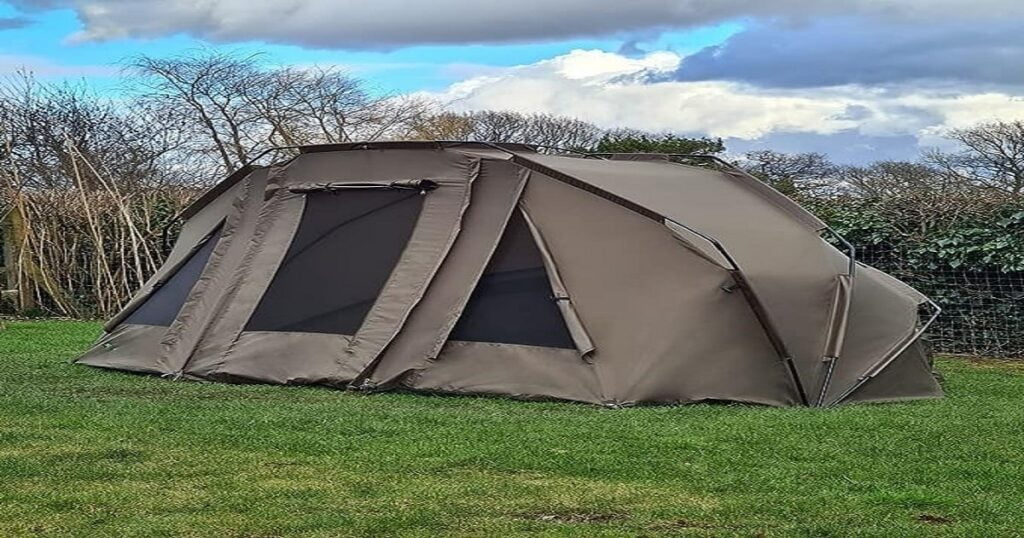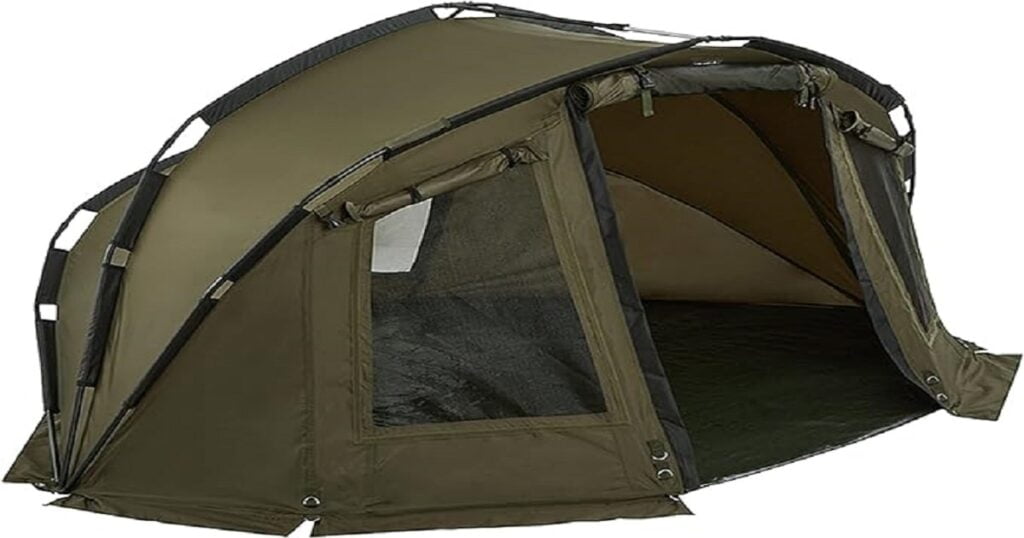When it comes to buying a bivvy there are 6 very important factors to consider, regardless of the brand you are looking at. Let’s delve into what you should really be thinking about when it comes to buying your next fishing bivvy.
Intro
There’s no denying the allure of fishing an overnight or multi-day session. The gentle lapping of water, the thrill of the potential catches ahead, and the serenity of nature all around. But as every seasoned angler knows, having the right gear can make or break your experience. This is especially true when you’re planning to brave unpredictable weather. One of the most critical pieces of equipment for such adventures is a bivvy. But with so many options on the market, how do you choose the right one?
1) Bivvy Size and Space
When you’re out on the bank, the last thing you want is to feel cramped inside your bivvy. Consider the number of people it needs to accommodate. Is it just for you or do you fish with a buddy or partner?
Additionally, think about the equipment you carry with you. Some prefer a minimalist approach, while others like to have all the bells and whistles with them. A bivvy that is too small can make your fishing trip uncomfortable, whereas one that’s too large might be unnecessarily bulky and harder to transport.
For those looking at using their bivvy mainly for multi-day sessions its always advisable to consider a larger or even two-person bivvy as this will help you accommodate a lot more tackle and gear and make your stay more comfortable.

2) Material and Durability
Carp fishing often means exposing oneself to the elements and this is where the material of your bivvy becomes paramount.
You need something that’s both waterproof and breathable. A durable bivvy will withstand not just the rain but also the harsh UV rays of the sun. High-quality materials like nylon or polyester with a hydrostatic head rating (which measures water resistance) of at least 5000mm are advisable so where possible check the product details before you make a purchase.
Additionally, consider the bivvies poles and pegs – these should be sturdy enough to withstand strong winds and not bend or break easily. Its also worth picking up a rubber mallet, most bivvies don’t come with one, which can be a lifesaver for getting those pegs into tough, hardened ground.
3) Weight and Portability
If you’re an angler who loves to explore different spots and move around, the weight and portability of your bivvy is crucial.
You don’t want to be lugging around a heavy bivvy across banks or through woods. Look for models that are lightweight yet durable. Additionally, consider how the bivvy packs down. Does it come with a carry bag? Is it compact enough to fit in or on your fishing barrow?
4) Bivvy Setup Time
After a long journey to your chosen fishing spot, the last thing you want is to fumble around with a complicated bivvy setup. Look for a bivvy that’s quick and easy to erect.
Some models come with a ‘pop-up’ design, which can be a real time-saver. It’s always a good idea to practice setting up your bivvy at home before heading out, so you’re familiar with the process and can set it up quickly on the bank.
5) Ventilation and Condensation
Nothing can dampen a fishing trip like waking up in a bivvy filled with condensation. Condensation occurs when the moisture-laden warm air inside the bivvy encounters a colder surface, like the bivvy walls or roof. The warm air inside the bivvy can’t hold onto the moisture as effectively when it cools which leads to the formation of water droplets on the interior surfaces.
Good ventilation is vital to prevent this so ensure your chosen bivvy has adequate vents, preferably with mosquito nets to keep those pesky bugs out during the summer.
If you do fish a lot during cooler months, it’s wise to invest in an overwrap or skullcap for your bivvy. This is usually an optional extra so comes at an additional cost but by adding a second layer over the bivvy this acts as extra insulation which will keep you warmer and your bivvy condensation to a minimal in the winter.

6) Price and Warranty
Finally, while we all love a good deal, it’s essential to remember that you often get what you pay for. Investing in a high-quality bivvy that meets all your needs might cost you more upfront, but it’s likely to last longer and serve you better.
Always check the warranty and the manufacturer’s reputation. Reading reviews from other carp fishing enthusiasts can give you a good idea of the bivvy’s real-world performance.
In Summary
Choosing the right bivvy for your carp fishing adventures is more than just picking one that looks good. It’s about finding a balance between comfort, durability, and practicality.
By considering the factors listed above, you’re sure to find a bivvy that’ll not only enhance your fishing experience but also stand the test of time.